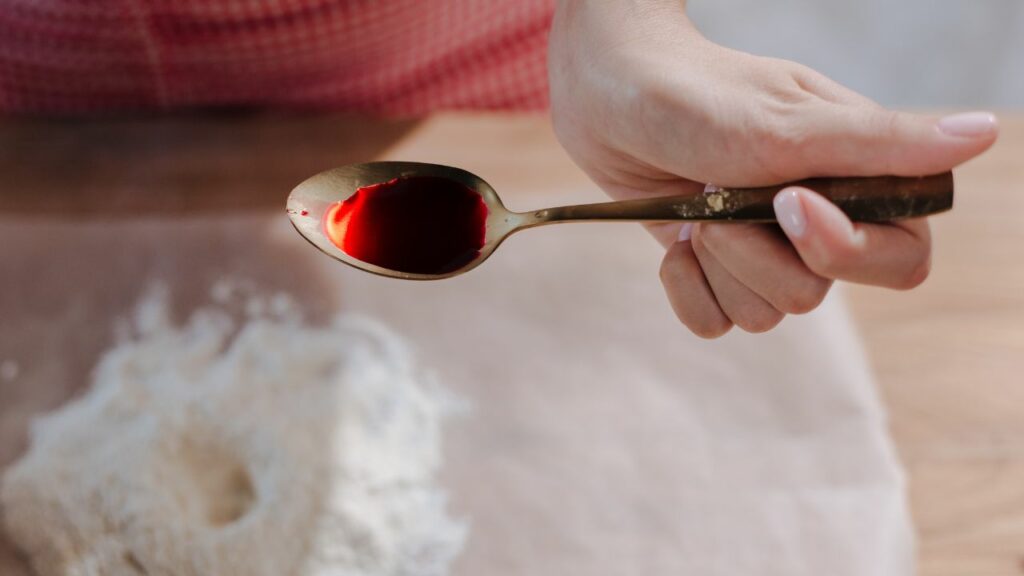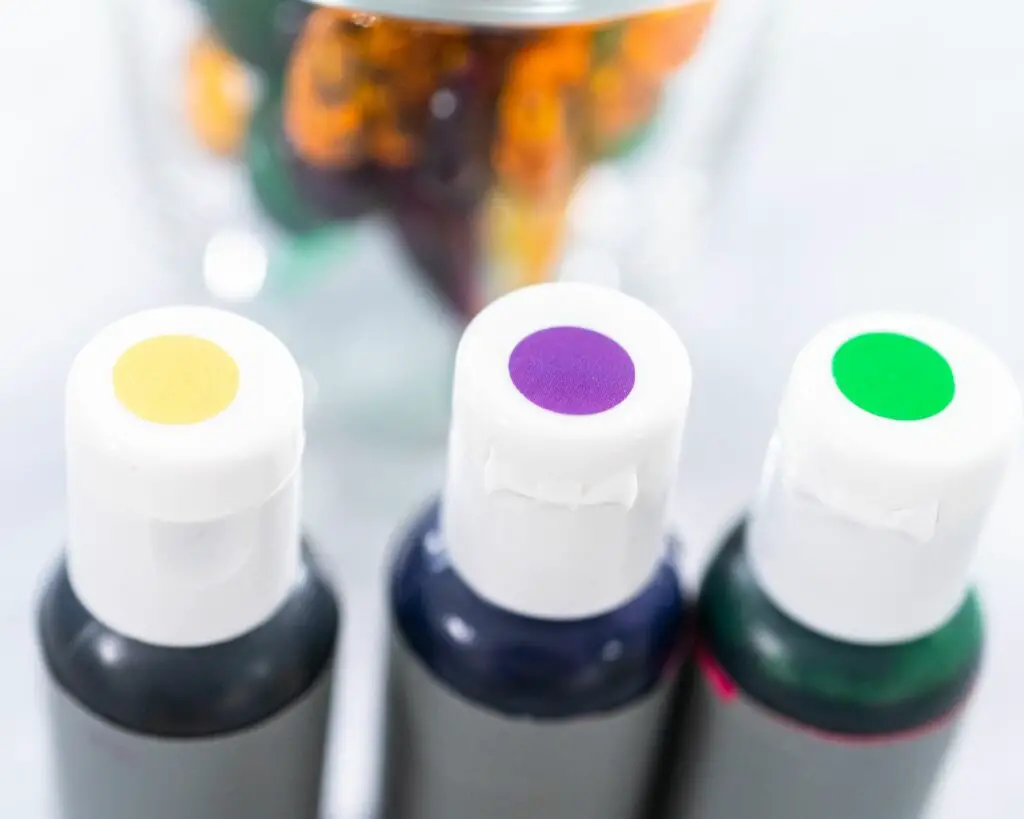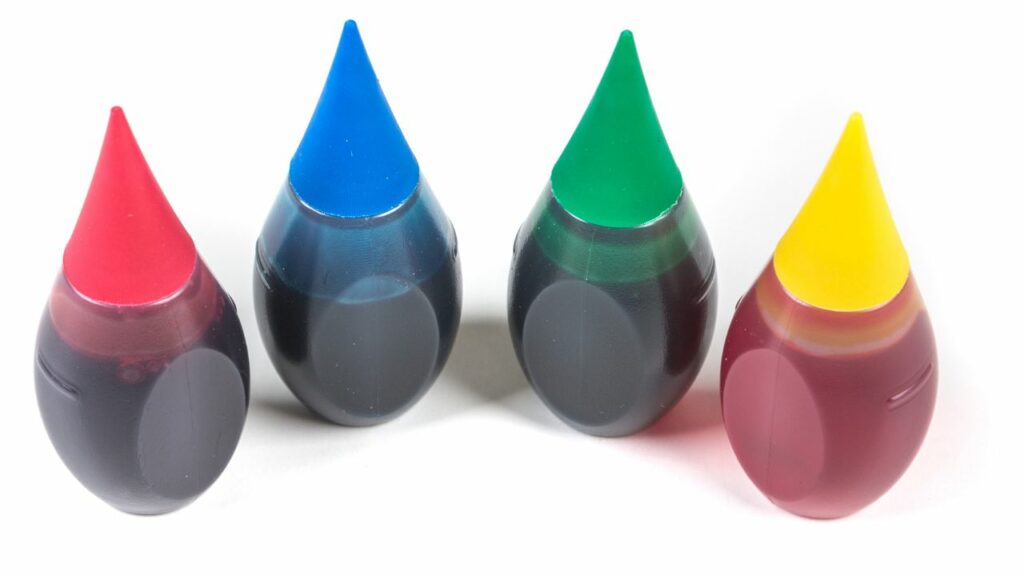Have you ever wondered what makes cakes, cookies, and other treats so colorful and fun? The secret weapon in many kitchens, including mine, is food coloring, especially gel food coloring. But is gel food coloring oil-based?
Let’s find out and talk about it in easy-to-understand terms.
What’s in Gel Food Coloring?
TAP ON IMAGE TO LEARN MORE
Gel food coloring is primarily composed of water, a thickening agent like corn syrup or glycerin, and dyes for color. It’s called ‘gel’ because of its jelly-like consistency that holds its shape when scooped.
This type of food dye is often the go-to choice, especially for recipes with high water content. The reason is simple: you only need a tiny amount of this gel to achieve bright and intense colors.
In other words, when it comes to gel-based food coloring, a little really does go a long way.
Why Do People Love Using Gel Food Coloring?

People prefer gel food coloring for several reasons:
- Control: Unlike liquid food coloring that can spill and make a mess, gel food coloring is easier to control. You can add just a tiny bit at a time to get the color you want.
- Bright Colors: Gel food coloring has really bright colors that don’t fade away when you bake your treats. This is super helpful when you’re trying to make something look just right.
- Tasteless: Gel food colorings are great because they do not introduce any foreign or undesired tastes into dishes, ensuring that only the intended flavors of the food are preserved.
- Blends Well: Their concentrated and consistent texture ensures that they blend smoothly and evenly throughout the dish, resulting in vibrant and uniform colors.
- Safe Ingredients: Most gel food colorings are crafted with safety in mind, often formulated with ingredients that are recognized as safe for consumption, giving users peace of mind when incorporating them into their dishes.
- Many Uses: From cakes to cookies to icings and frostings, you can use gel food coloring for lots of different recipes. It’s versatile and handy to have in your kitchen.
So, Is Gel Food Coloring Oil-Based?

Here’s the straight answer: No, gel food coloring is not oil-based. It’s mostly made of water and other ingredients that mix well with water. In cooking, it’s important to know what mixes well with what. Water and oil don’t mix, and since most baked goods need water, gel food coloring is designed to work well with it.
Read Also: How To Color Cake Mix Using Natural Food Coloring.
Why Isn’t Gel Food Coloring Oil-Based?

So, “Why don’t they just make gel food coloring with oil?” The simple answer is that oil and water don’t mix well. Most recipes, especially for baking, involve ingredients that mix better with water, not oil.
Here’s a bit more on why:
- Compatibility Issues: Think about mixing oil and water in a glass. They don’t blend; they separate into two layers. The same would happen if you tried to use oil-based food coloring in a water-based recipe like cake batter. The color would not mix in evenly.
- Texture Matters: The thickness of gel food coloring helps it blend smoothly into doughs and batters. Oil-based colorings are often more liquid-like, and they would just separate and ruin the consistency people like in gel-based coloring.
Expanding Uses of Gel Food Coloring
Let’s see where you can use gel food coloring:
TAP ON IMAGE TO LEARN MORE
- Cakes and Cookies: You can use gel food coloring in the dough or batter. Because it’s so concentrated, you only need a little to make the whole thing colorful. And you don’t have to worry about adding too much liquid to your recipe.
- Icings and Frostings: Here, the thickness of the gel is a huge benefit. You can add color without changing the texture of your icing or even jazz up your store-bought frosting. No more runny, hard-to-spread frosting!
- Fondant and Gum Paste: These are the play-dough-like substances bakers use to make fancy decorations. Gel food coloring is perfect here because you can mix in the exact shade you want.
- Macarons and Meringues: These treats are super delicate. A wrong move can mess them up. Gel food coloring is gentle enough to add color without ruining the texture.
- Holiday Foods: Special occasions like Christmas, Easter, or Halloween often call for colorful foods. Gel food coloring can help you make festive and fun treats that everyone will love.
Tips for Success
Before you go on a coloring spree, here are some tips:
- Read Labels: Different brands might have slight differences. Always read what’s on the bottle to make sure it says “water-based” or “gel.”
- Test First: If it’s your first time using a particular color or brand, try it out on a small portion before you color the whole thing.
- Clean Up: Gel food coloring can stain, so wash your utensils and bowls as soon as you’re done.
Which Food Coloring is Healthier: Gel or Oil-Based?

Both gel and oil-based food colorings are generally considered safe, but they can contain artificial and sometimes petroleum-derived dyes.
Gel food coloring is usually water-based, adding no fats to your recipe. In contrast, oil-based food coloring commonly uses vegetable oils like soybean or sunflower oil.
If you’re concerned about artificial ingredients, it’s best to read the labels and opt for natural or organic versions in either type.
Storage and Shelf-Life
Gel Food Coloring:
Gel food coloring can last up to a year if stored correctly. Keep it in a cool, dark place, and make sure the container is sealed tightly.
Oil-Based Food Coloring:
Oil-based food coloring often has an even longer shelf-life, up to two years or more. It also benefits from storage in a cool and dark environment.
General Tips:
For both types, keep them away from heat and direct sunlight to maintain their quality. Always check the expiration date and look for signs of spoilage, like changes in color or smell.
Food Coloring Cost Comparison
Gel Food Coloring:
TAP ON IMAGE TO VIEW PRICE
Gel food coloring is generally less expensive. This is because it’s more concentrated, so you need less of it to get vibrant colors.
Oil-Based Food Coloring:
TAP ON IMAGE TO VIEW PRICE
Oil-based food coloring is slightly pricier per bottle. Though it’s perfectly suited for tinting fat-rich foods like chocolate, one might consider its cost when budgeting for baking supplies.
Choosing Between Them:
If you’re seeking intense color and don’t mind spending a little extra, gel food coloring is the way to go. However, if you’re on a budget and require coloring for specific items like chocolate, oil-based tends to be more economical.
Common Food Coloring Brands
Gel Food Coloring:
- Wilton: I often recommend Wilton for those who are new to baking or cake decorating. They offer a wide variety of vibrant colors and are widely available.
- AmeriColor: If you’re looking for highly concentrated colors, AmeriColor is a brand I personally like. Their soft gel paste colors are great for more detailed work.
- Chefmaster: For professionals or those serious about baking, Chefmaster is a brand I often suggest. They offer a fantastic range of colors, including some neon shades.
Oil-Based Food Coloring:
- LorAnn: I usually recommend LorAnn for oil-based colorings, especially if you’re working with chocolate or other fat-based foods. They’re reliable and easy to use.
- Chefmaster’s Candy Colors: Another option I like from Chefmaster, but these are oil-based and are best suited for candy and chocolate-making.
- Wilton’s Candy Colors: If you’re a fan of Wilton for gel colors, you might want to stick with them for oil-based options too. Their Candy Colors are designed explicitly for chocolate and other fat-based products.
Food Coloring: Quick Guide
The table below provides a quick overview to help you decide which type of food coloring would be most appropriate for your culinary project.
| Type of Food Coloring | Best Uses |
|---|---|
| Gel Food Coloring | Cake batters, cookie dough, icings, and frostings |
| Fondant and gum paste for cake decorations | |
| Macarons and meringues | |
| Beverages | |
| Jello and puddings | |
| Easter eggs and other holiday-specific recipes |
| Buttercreams with high-fat content | Homemade pasta |
|---|---|
| Oil-Based Food Coloring | Chocolate and candy coatings |
| Cake pops and truffles | |
| Lip balms and other edible cosmetics | |
| Oil-based recipes like salad dressings | |
| Buttercreams with high fat content | |
| Some types of homemade soap |
So, to sum it all up:
Gel food coloring is not oil-based; it’s water-based. It’s easy to use, and it’s great for adding bright, beautiful colors to all kinds of foods. Keep some in your kitchen, and you’ll find plenty of uses for it. Whether you’re an expert baker or just having fun, gel food coloring can make your culinary creations look as good as they taste.
Related Video:





My cake turned out amazing 🙂